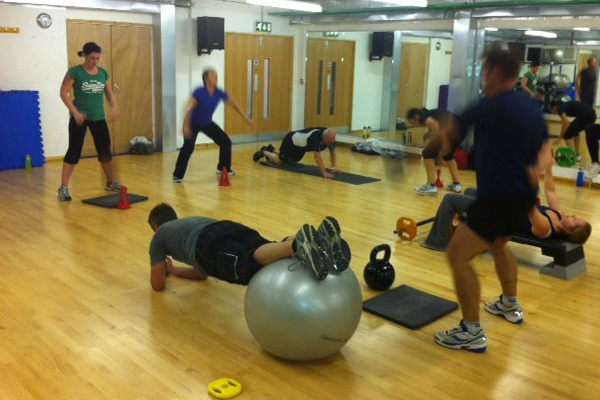
The Benefits of Interval Training
Interval training
Many have discovered it's an effective and efficient way to train. It's an excellent way to burn more calories, build endurance quickly and make workouts more interesting because you're alternating high intensity exercises with recovery periods. The Benefits of Interval Training While steady state cardio workouts have their place, interval training can be a more efficient way to train.
Working at an uncomfortable level, even for just 30-60 seconds, puts your body into calorie-burning mode so you can have shorter workouts that give you a little more bang for your buck.
- •Burns more calories - The harder you work, the more calories you burn overall, a plus if your goal is to lose weight.
- •Increases endurance more quickly - Working at a higher level, even if it's for short periods of time, increases your endurance. You'll find your other workouts get easier because of your interval workouts.
- •Increases your afterburn - If you really go all out, your body will burn more calories for a period of time after your workout to get your body back to its pre-exercise state.
- •Adds some variety to your workouts - If you usually do the same thing all the time, the same pace and the same level of intensity, interval training can add a breath of fresh air to your workouts and, because they're so versatile, you can change them every week if you like.
- •More time efficient - With exercise, the harder you work, the shorter your workouts will generally be. It's possible to get a great cardio workout in just 20 or 30 minutes with interval training, leaving you more time for other things.
Benefits include:
Types of Interval Training
What's great about interval training is the fact that you have a wide variety of options to choose from, all of which elicit different responses depending on what you choose. Just some options:
- • Measured periods of work - One option is measured periods of work followed by measured periods of rest. An example would be 1 minute of high intensity work (such as a sprint), followed by 2 minutes of low-intensity exercise (e.g., walking) and alternating that several times for 15-30 minutes.
- • A longer work-to-rest ratio - Now, with this, your intensity bursts are longer than your recovery periods, say 30 seconds of work followed by a minute of rest. This is a great option if you're a beginner or you want to go all out on those shorter intervals.
- • A shorter work-to-rest ratio - Here you can shorten the rests and lengthen the work, great for advanced exercisers or if you really want to burn more calories and build endurance.
- • Anaerobic intervals - Another option is to design your intervals around the intensity level. Anaerobic intervals are the most intense intervals you can choose. The word itself means without oxygen, meaning you're working so hard, your oxygen levels can't keep up. This could be about a Level 9 on this Perceived Exertion Chart. This kind of training isn't for beginners, of course, but great for more advanced exercisers who want high intensity interval training.
- • Aerobic intervals - Unlike anaerobic intervals, aerobic intervals keep you at a moderate-high intensity rather than at an all-out pace. You can usually do these intervals for longer periods, making this a great place to start for beginners who aren't quite ready for all-out work.
- • Unmeasured periods of work - You can also do intervals that aren't measured or fartleks. For example, if you're outside, you could run or speedwalk to something in the distance then slow down to recover, repeating the sprint when you feel rested. That gives you full control over how hard and low long you work
Precautions
Keep in mind that, if you really are working at a very high level of intensity, you only want to do interval training about 2-3 nonconsecutive days a week. Your body needs rest and recovery after really hard workouts, so you don't want every single workout to be a killer.
In fact, it's a great idea to work in these different types of interval workouts every week. For example, you could start the week with a high intensity interval workout, then do a more aerobic interval workout the next day. Your high intensity workouts should be shorter while you can go longer with your more aerobic workouts.
Call Steve, In-Training Sports | 561-281-8330
In Training Sports
www.intrainingsports.com
3131 Village Blvd, #305
West Palm Beach, FL 33409